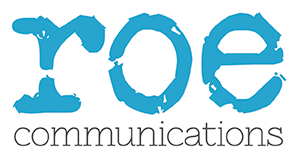
The business education community is adapting to the COVID-19 situation, with many schools switching rapidly to different ways of teaching and operating.
Most business schools have already initiated communications with staff, students, partners and clients on their ongoing response to the crisis. For many communications teams it’s been a hectic, stressful and fast-moving situation.
But at the same time, many are wondering whether and how they can keep pro-actively promoting their school and programmes.
Thinking long-term
Whilst we are facing many uncertainties, like other crises, there will be a time, some months in the future, when things are brighter.
It’s natural to take a reactive stance now. But when the market bounces back, and it will at some point, experience has shown that organisations that have not continued to engage with, and grow, their audiences, will be in a much less favourable position.
Of course, there are immediate communications priorities, such as reassuring and guiding people on what their school is doing to stop the spread of the virus. And there will be significant work to show students that they will get the same quality of learning online.
But fast-forward to 12, maybe 18 months’ time and we may well be operating in a different market. The full-time MBA may not look the same as it does now. And there may well be an acceleration towards online and blended programme delivery.
If history shows us anything, it’s that after a downturn, people turn to additional training and development. Longer-term, we can expect more people wanting business education, in some cases in a very different form.
Now is the time for schools to adjust their communications strategies for potential changes in the market so that they can be in a better position to emerge from this crisis.
Re-focussing content
Clearly, the switch away from on-campus to online reduces some of the opportunities for content generation from alumni gatherings, admissions events and conferences.
However, business schools have much to offer the present situation in terms of help, guidance, inspiration and insights, especially to businesses and individuals who might be struggling.
This could take the form of research and advice on topics such as virtual working or business resilience. Or it could be opening up relevant content from behind paywalls like Harvard Business Review has done.
We could provide content and insights to specific sectors such as small businesses which are going to need support. The UK’s Chartered Association of Business Schools Small Business Charter is a good example of this.
Audiences may take inspiration from stories of business leaders and alumni who are actively doing things to help the current crisis, or who have found a strategy to overcome acute challenges.
Using owned channels such as social media and websites, as well as engaging with the media, business school content can be genuinely helpful to organisations whilst keeping a regular flow of information going with people who might be at home.
Collaboration
While business schools are in competition with one another, as a sector, we are brilliant at working together. Colleagues working in external communications have a great opportunity to share innovative ideas and best practice amongst the global community. Whether that is new ways of tackling the challenges we face, to solutions from research or student start-ups, to partnering on initiatives, to simply supporting one another as we work through this crisis.
We are privileged to have extensive global networks such as EFMD and now is a great the time to reach out (virtually), and work with, and support colleagues at other institutions.
These are tough times for everyone and by pulling together, hopefully, we can support those within our communities and come out of it stronger.
This article originally appeared on the EFMD Blog, 18 March 2020.

